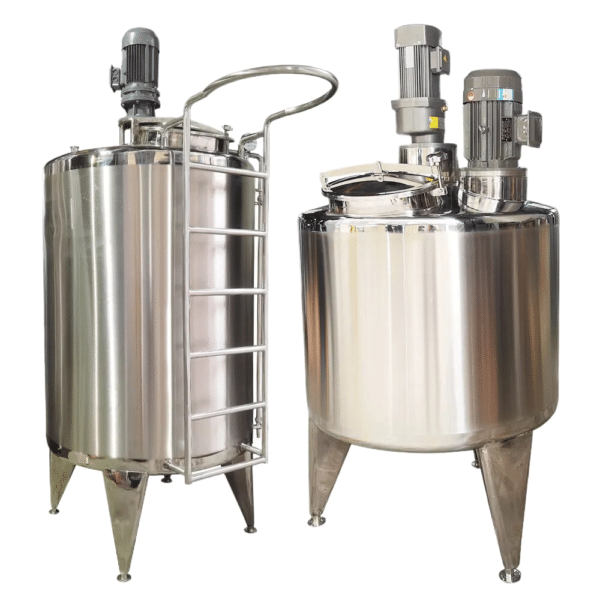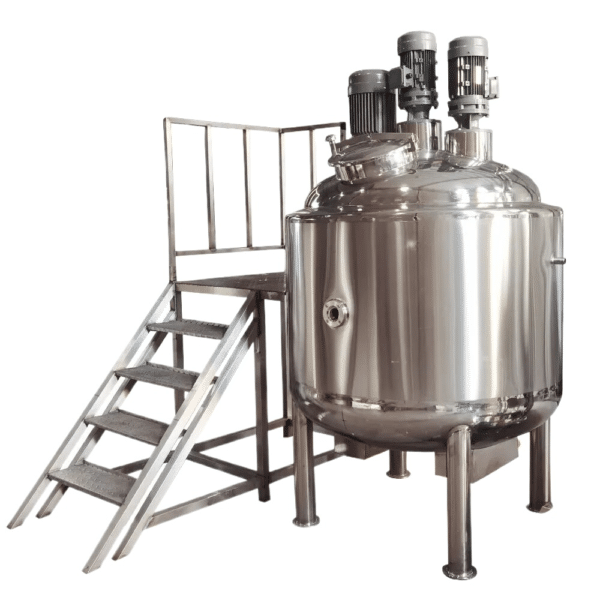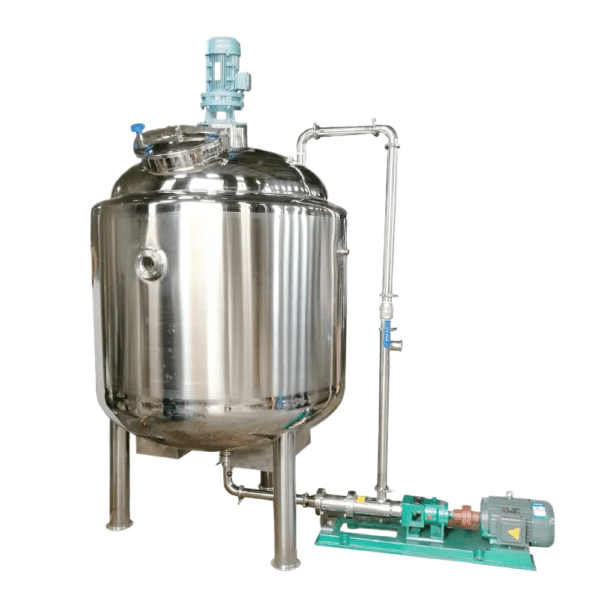Materials: 304 versus 316L Stainless Steel
304 Stainless Steel
This is the most commonly used stainless steel in many industrial applications. It has the ability to withstand oxidation and corrosion, which makes it suitable for mixing less aggressive substances such as food products, water-based solutions, and some chemicals. 304 stainless steel is more affordable as it provides good structural integrity but corrodes when exposed to most acids and ambient environments.
316L Stainless Steel
For sites containing more aggressive chemical compositions like saline solutions, chlorides, or acids, 316L stainless steel should be used. Due to its extra molybdenum content, it has excellent corrosion resistance and is specially formulated to withstand harsh environmental situations or extreme moisture saturation. Thus, it is most suitable for use in the pharmaceutical, chemical, and marine industries where sterility and chemical resistance are of utmost importance.
Mixer Options: Tailored to Your Needs
Selecting the appropriate mixer is an important aspect of achieving the desired consistency and quality of the end product. Some options include:
Paddle Mixers
Paddle mixers are a perfect tool for people looking to mix viscous substances and require low shear mixing. This is especially true for food products, slurries, and other materials which require very gentle motions so as not to break their integrity.
Propeller Mixers
Where there is a need to mix low viscosity liquids at high speeds, propeller-type mixers come in handy. These machines operate at high speed, and turbulence is produced within the liquids, which facilitates a uniform mixture, regardless of the viscosity or the density of the liquids.
Turbine Mixers
Turbine mixers are highly efficient at mixing both gases and liquids. They are often used in chemical processing and biopharmaceutical applications where medium to high shear forces are required.
Anchor Mixers
Designed for thicker, highly viscous materials, anchor mixers slowly and effectively combine without damaging the product consistency. Their application is suitable for heavier mediums like creams, pastes, and gels.
Three-Layer Construction: Enhanced Performance and Insulation
The 1000-gallon mixing tank has three layers: the inner mixing chamber, insulation layer, and an outer jacket. The three-layer design ensures thermal stability, which is important to protect the products from being damaged during prolonged mixing processes. Additionally, this design provides great resistance against wear and tear.
Jacketed for Heating: A Variety of Heating Alternatives
This mixing tank has a jacketed configuration that favors effective heat management, important in processes that are temperature dependent. Two main heating methods can be used:
Electric Heating
Electric heating is a great option for those industries that want more controlled and instant heating. Heat power ranges from 1.5KW to 55KW, and electric heating systems can be tailored to suit different scales of industrial use and processing times. They offer high precision temperature control, which is crucial for processes that require precise heating levels.
Steam Heating
Steam heating is more economical as it provides a uniform and effective heating process, ideal for industries that deal with heat-sensitive or very viscous materials. It is especially useful in the food and chemical industries where even heat distribution is essential to achieve a good end product.
Power and Voltage Options
Each 1000-gallon mixing tank is manufactured with a range of power and voltage configurations. The tanks can range from 1.5KW to 55KW, offering flexibility to work with various capacities of the tank. Furthermore, the voltage can range from 220V to 600V, ensuring compatibility with different power sources and industrial settings.
Application Areas: Versatile for Multiple Industries
The 1000-gallon mixing tank is found across numerous industries due to its flexible design, durability, and customization options, including:
Food and Beverage
The 1000-gallon mixing tank is ideal for producing sauces, dairy, and beverage products. It is equipped with stainless steel options that allow for clean production and jacketed heating for temperature control during pasteurization and other cooking activities.
Pharmaceuticals
For the pharmaceutical industry, the focus is on stringent hygienic conditions and precise ingredient components. These tanks are constructed out of 316L stainless steel, which is ideal for large shear mixing of delicate products like lotions and syrups.
Chemical Processing
The 1000-gallon mixing tank is trusted for blending chemicals with varying viscosity and temperature. It ensures a high level of safety and accuracy when handling aggressive chemicals and offers simultaneous control over the process.
Cosmetics
In the cosmetics industry, the tank is designed for the emulsification of creams, lotions, and gels. The high-viscosity anchor mixers that come with the tank ensure the integrity of the products while enhancing their quality.
Frequently Asked Questions (FAQs)
What is the difference between 304 and 316L stainless steel?
316L is more resistant to aggressive chemicals like chlorides, making it better suited for industries like pharmaceuticals and chemicals. 304 stainless steel, while cost-effective, is more applicable to less aggressive environments.
What mixers are available for the 1000-gallon tank?
Available mixer options include paddle, anchor, turbine, and propeller mixers, which can be tailored to different material viscosities and process requirements.
Is it possible to select steam or electric heating?
Yes, both electric heating (ranging from 1.5KW to 55KW) and steam heating options can be installed based on the process requirements.
Can the tank hold high viscosity products?
Yes, the anchor mixer option is specifically suited for high viscosity products, including creams, pastes, and gels.
What voltage configurations are available?
The tank can work with voltages between 220V and 600V, fitting different industrial and regional norms.
What advantages does the jacketed design bring to my process?
The jacketed design provides temperature control, which is critical for processes that require heating or cooling, such as emulsification or dissolving.
Contact Us Today
The 1000-gallon mixing tank is versatile, sturdy, and comes with various customization options, making it perfect for industries like medicine and food processing. This tank meets your production requirements with quality construction, varied mixer configurations, and differential heating elements. Contact us for more information on how our 1000-gallon mixing tanks can increase productivity and efficiency in your production process. Get an industry-specific quote today!









